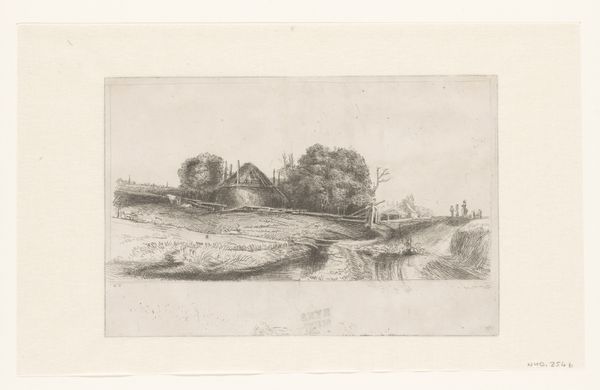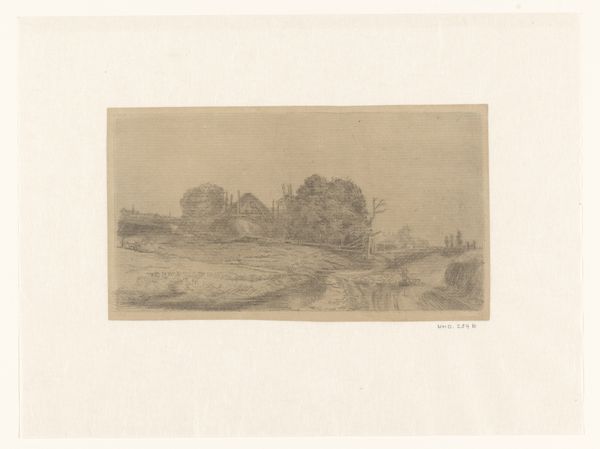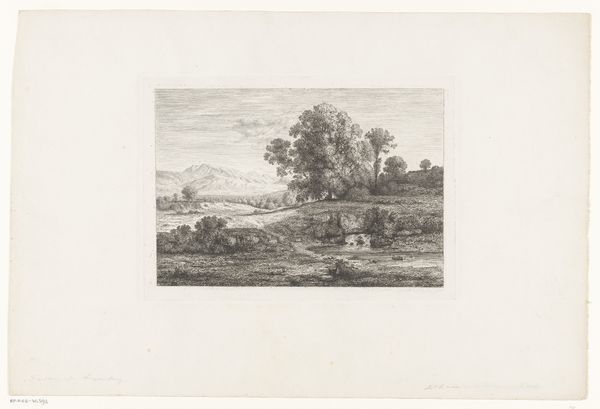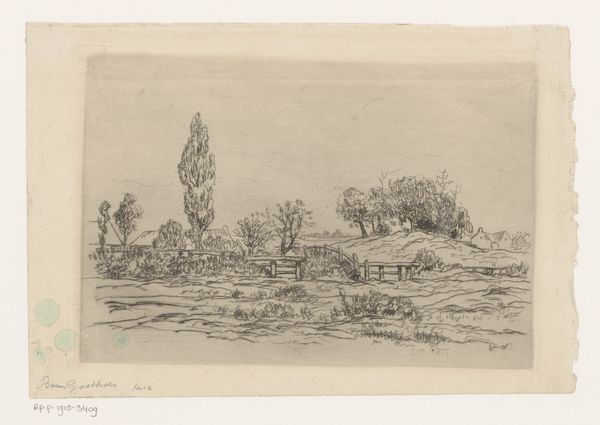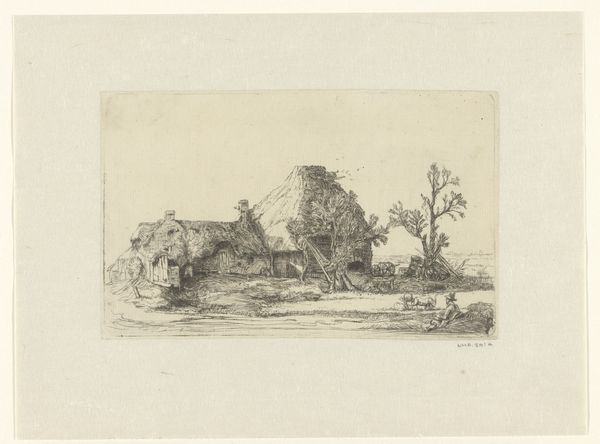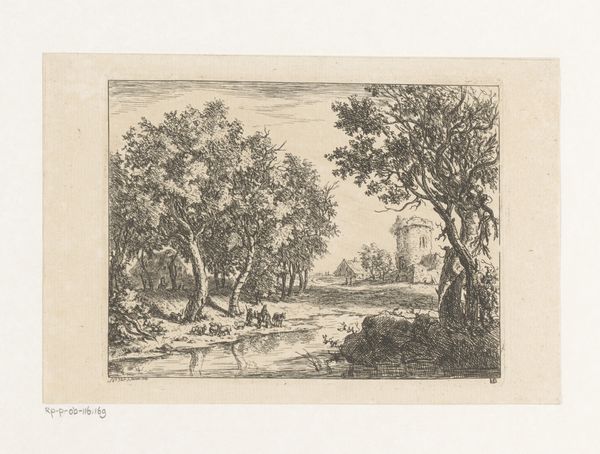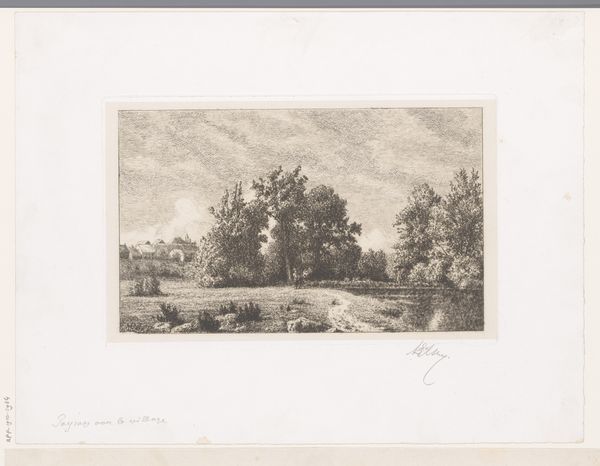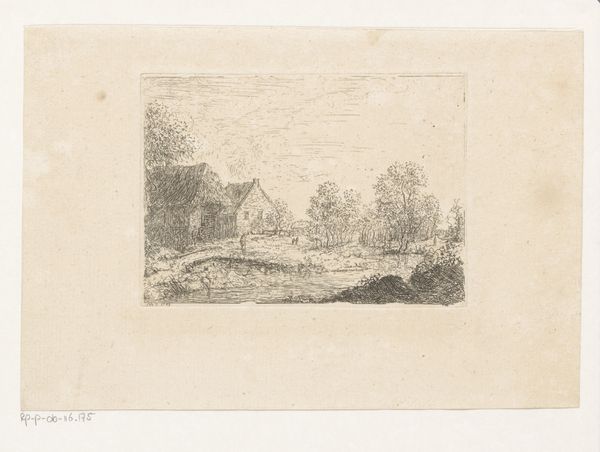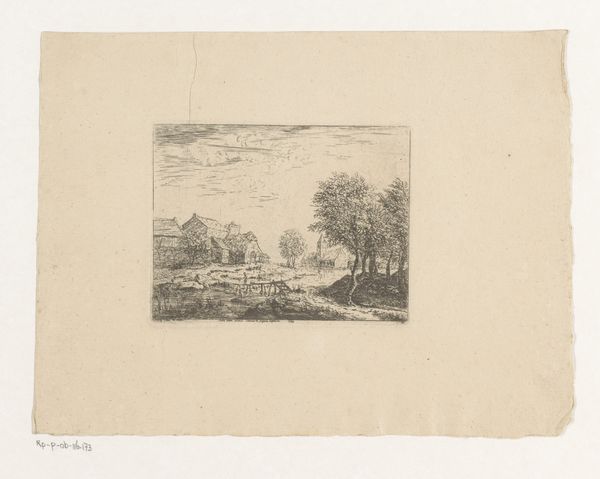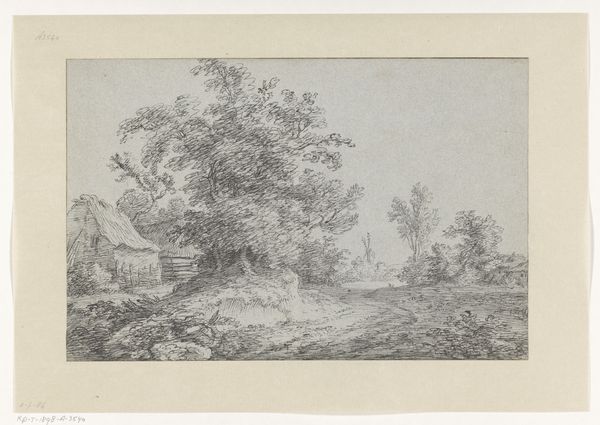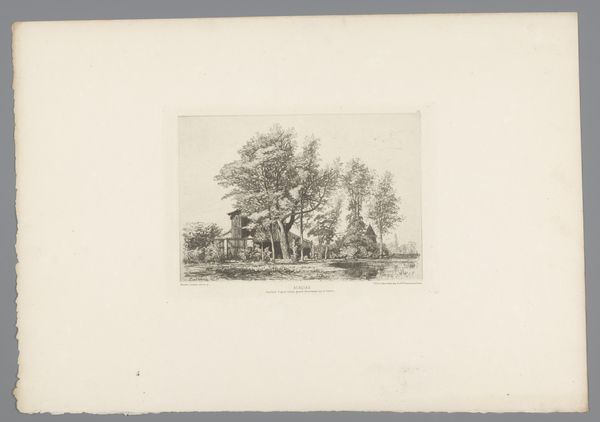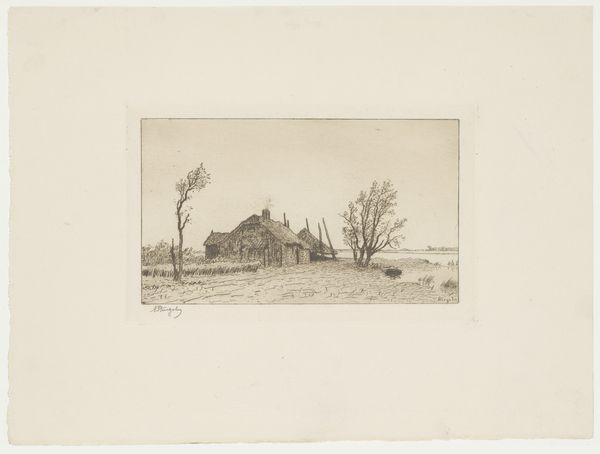
Dimensions: height 78 mm, width 202 mm
Copyright: Rijks Museum: Open Domain
Editor: Here we have "Landscape with a Canal and Fence," a pencil and paper drawing made sometime between 1733 and 1797, currently residing here at the Rijksmuseum. It reminds me of a quick sketch in a field journal. What visual elements strike you most when you look at it? Curator: Primarily, I’m drawn to the composition’s interplay between line and space. Notice the stark horizontal emphasis, reinforced by the canal, the fence, and even the elongated format of the paper. The artist contrasts this with the vertical assertion of the trees and the farmhouse structure. Do you observe how these lines function in relation to each other? Editor: I do. It's like a structured dance between horizontality and verticality. It gives the artwork both movement and balance. What else do you notice in this balance? Curator: Consider the tonality. The limited range of pencil values creates a unified, almost flattened picture plane. This compels us to examine the texture and the subtle gradations within the grey scale. Light and shadow are not treated traditionally; instead, they seem subservient to line. Does this affect your interpretation of depth within the landscape? Editor: It makes the depth more suggested than literal. More of an implied depth rather than actually three-dimensional. It's almost abstract, or maybe just pre-Impressionist in how it values light. I think I see how the artist created that formal relationship using only line. Curator: Exactly. The charm of this landscape resides not in mimetic accuracy, but in the visual articulation of its constituent elements and structural relation within a frame. Editor: Well, I have to say that’s a new way to look at landscapes for me. Curator: And a valuable perspective on interpreting the formal considerations of drawing.
Comments
No comments
Be the first to comment and join the conversation on the ultimate creative platform.
